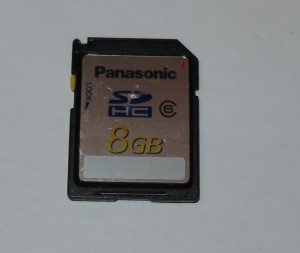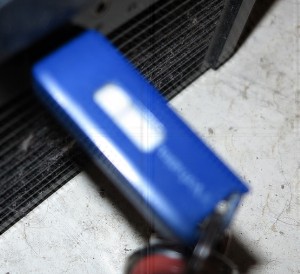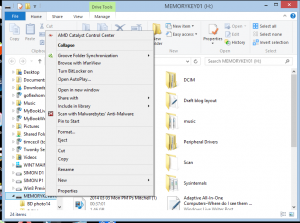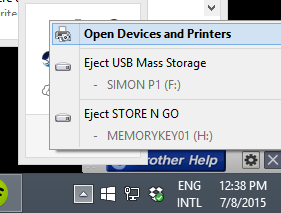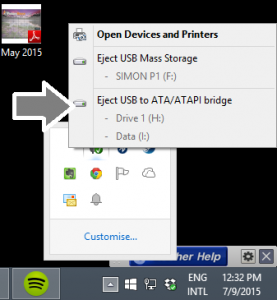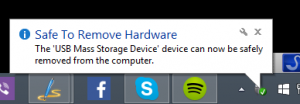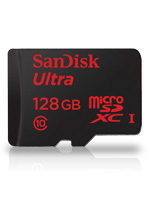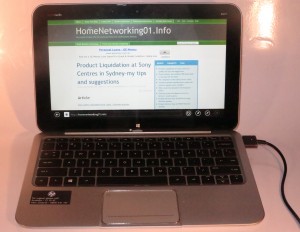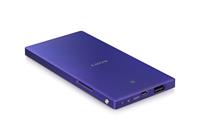The MicroSD card undergoes evolutionary changes
Articles
1TB microSD cards will boost the storage of your device, if you can afford it | TechRadar
From the horse’s mouth
SD Association
microSD Express – The Fastest Memory Card For Mobile Devices (PDF – Press Release)
My Comments
The microSD card which is used as a removeable storage option in most “open-frame” smartphones and tablets and increasingly being used in laptops has gained two significant improvements at this year’s Mobile World Congress in Barcelona.
The first of these improvements is the launching of microSD cards that can store 1 terabyte of data. Micron pitched the first of these devices while SanDisk, owned by Western Digital and also a strong player with the SD Card format, offered their 1Tb microSD card which is the fastest microSDXC card at this capacity.
The new SD Express card specification, part of the SD 7.1 Specification, provides a “best-case high-throughput” connection based on the same interface technology used in a regular computer for fixed storage or expansion cards. The microSD Express variant which is the second improvement launched at this same show takes the SD Express card specification to the microSD card size.
The SD Express specification, now applying to the microSD card size, achieves a level of backward compatibility for host devices implementing orthodox SD-card interfaces. This is achieved through a set of electrical contacts on the card for PCI Express and NVMe interfaces along with the legacy SD Card contacts, with the interfacing to the storage silicon taking place in the card.
As well, there isn’t the need to create a specific host-interface chipset for SD card use if the application is to expressly use this technology and it still has the easy upgradeability associated with the SD card. But most SD Express applications will also have the SD card interface chipset to support the SD cards that are in circulation.
This will lead to the idea of fast high-capacity compact removeable solid-state storage for a wide range of computing applications especially where size matters. This doesn’t matter whether the finished product has a smaller volume or to have a higher effective circuit density leading to more functionality within the same physical “box”.
One use case that was pitched is the idea of laptops or tablets, especially ultraportable designs, implementing this technology as a primary storage. Here, the microSD Express cards don’t take up the same space as the traditional SATA or M2 solid-state storage devices. There is also the ability for users to easily upsize their computers’ storage capacity to suit their current needs, especially if they bought the cheapest model with the lowest amount of storage.
Photography and videography will be another key use case especially when the images or footage being taken are of a 4K UHDTV or higher resolution and/or have high dynamic range. It will also be of benefit for highly-compact camera applications like “GoPro-style” action cams or drone-mount cameras. It will also benefit advanced photography and videography applications like 360-degree videos.
Another strong use case that is being pitched is virtual-reality and augmented-reality technology where there will be the dependence on computing power within a headset are a small lightweight pack attached to the headset. Here, the idea would be to have the headset and any accessories able to be comfortably worn by the end-user while they engage in virtual-reality.
Some of the press coverage talked about use of a 1Tb SD card in a Nintendo Switch handheld games console and described it as being fanciful for that particular console. But this technology could have appeal for newer-generation handheld games consoles especially where these consoles are used for epic-grade games.
Another interesting use case would be automotive applications, whether on an OEM basis supplied by the vehicle builder or an aftermarket basis installed by the vehicle owner. This could range from a large quantity of high-quality audio content available to use, large mapping areas or support for many apps and their data.
The microSD card improvements will be at the “early-adopter” stage where they will be very expensive and have limited appeal. As well, there may need to be a few bugs ironed out regarding their design or implementation while other SD-card manufacturers come on board and offer more of these cards.
At the moment, there aren’t the devices or SD card adaptors that take advantage of SD Express technology but this will have to happen as new silicon and finished devices come on to the scene. USB adaptors that support SD Express would need to have the same kind of circuitry as a portable hard drive along with USB 3.1 or USB Type-C technology to support “best case” operation with existing host devices.
This technology could become a game-changer for removeable or semi-removeable storage media applications across a range of portable computing devices.

